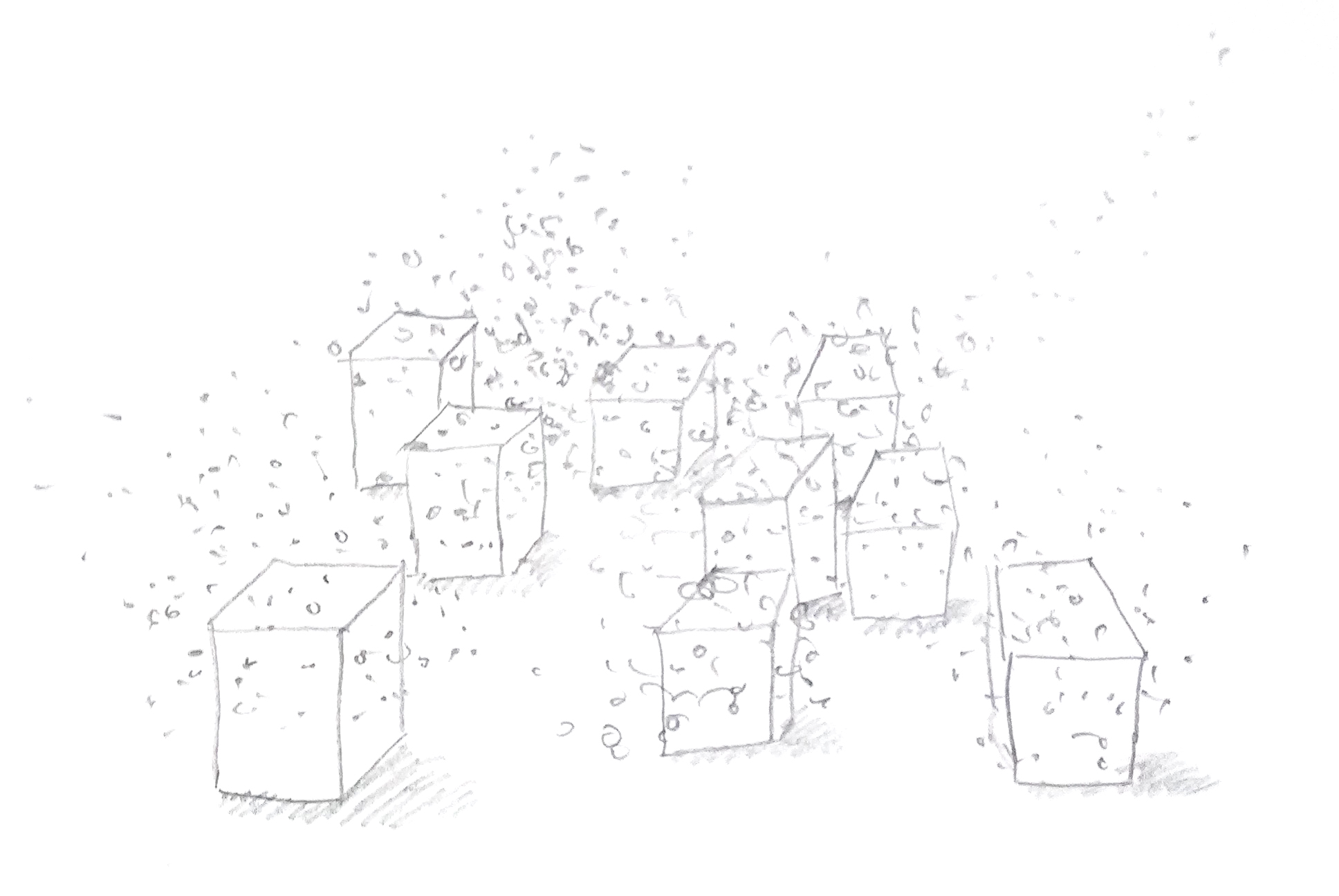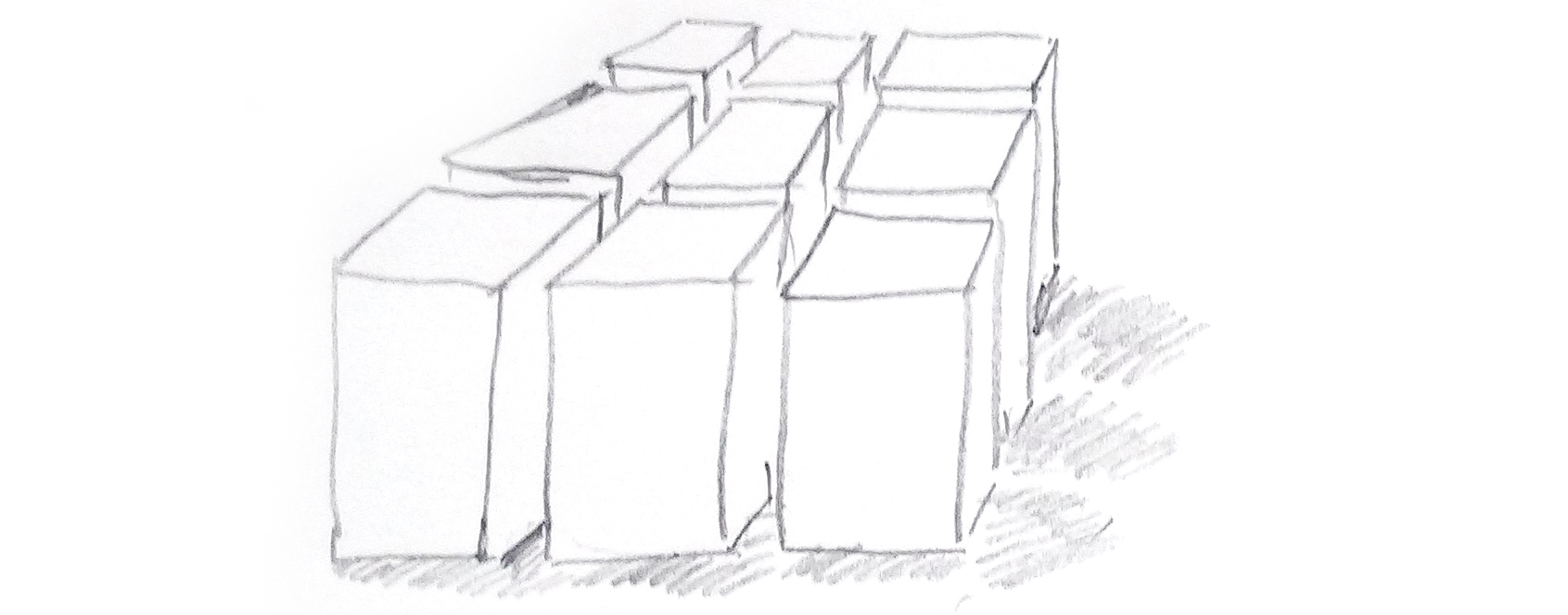>>> NEXT CHAPTER <<<PREVIOUS PAGE >TABLE OF CONTENTS<
2.3 COOPERATIVE CHANGE MAKERS
How will the process of including the change makers in a cooperation work? In this chapter, I will describe how this cooperation functions, including in the city lab setting.
INCLUSIVE COOPERATIONS
An interdisciplinary cooperation is based on the concept of various disciplines and expertise’s working together on a problem. It is a process of connecting the dots between expert knowledge. As experts cannot be seen as the change makers, neither can an interdisciplinary approach be seen as a way of dealing with ecological issues, as it doesn’t give space to include the voice of the change makers. Transdisciplinary cooperation allows unique knowledge to be developed beyond the traditional canvas of an interdisciplinary approach.
Expert knowledge is still key, but in order to get new insights, this expert knowledge should be combined with the non-expert knowledge. Transdisciplinary cooperation includes the change makers in a co-creation process. Papanek argued for heightened awareness of the constitution of the team. He proposed that “integrated design needs teams of specialists, too …and.. the people for whom the design team works must have representation on the team itself.” Change makers can contribute by “making directly aware of needs which the professional opinion takers didn’t realize or considered unimportant.’ (Papanek, 1984, p.119) The complexity and urgency of the ecological issues demand an awareness of the cooperation between experts and non-experts. As experts and non-experts are not opposite to each other and are integrated, it makes the boundary between them fluid.
How do these cooperation’s with these fluid boundaries work?
FLUID BOUNDARIES
First it is important to define how the fluid boundaries are generated. The way Pro-Ams merge expert and non-expert knowledge fields is on a very intuitively base and is guided by their love for a topic. These unintentional combinations are not aggregated.
Rancière called this the ‘power of the intelligent being’. It is the individual combination of the ‘learned’ with the ‘ignorant’ that will create this new knowledge. “There is no intelligence where there is aggregation…. there is intelligence where each person acts, tells what he is doing, and gives the means of verifying the reality of his action.” This ‘power of the intelligent being as such’ is something that can’t be developed solely on an individual basis. It requires cooperation; responsibility for this “is at once one of duality and one of community.” (Rancière, 1991, p.32) Communities have a responsibility to facilitate this transdisciplinary cooperation because it facilitates the creation of these fluid boundaries, as these do not appear out of the blue. Institutions like education, therefore, have a responsibility for this, as well.
Second a mutual interest in a topic and purpose connects various individual people to one another. City labs focus on a certain topic that creates a common purpose. Rancière described this as the connection of “intellectual beings, intelligence directs individuals alone; their union is subject to the laws of matter … immaterial minds cannot be linked together except by making them submit to the laws of matter.” (Rancière 1991, p.76) Fluid boundaries (expert and non-expert merged into one person) connect a wide variety of people. This connection generates new knowledge if people start cooperating in transdisciplinary settings whilst having a tangible common purpose.

Connecting the particles (matter) creates new knowledge, drawing Piscaer May 2017
Lastly these fluid boundaries allow us, in essence, to become true individuals whilst creating an ‘us’ as well. Connecting our individual loves for a topic to our professional knowledge creates true individual knowledge. By sharing the mutual interests with ‘others’, it connects ‘me’ and ‘you’ into ‘we’. Fuller described the transdisciplinary process of ‘The Great Pirates’ as “free in the sense that they will not struggle for survival on a ‘you’ or ‘me’ basis, and will therefore be able to trust one another and be free to co-operate in spontaneous and logical ways.” (Fuller,1969, p.34) There is huge value towards our ecological problems in being a true individual; creator of unique individual knowledge needed to tackle these complex ecological issues, and creating an ‘us’ at the same time; sharing the knowledge and connecting people and ideas rather then disconnection.
 NEW: FLUID
NEW: FLUID
Fluid boundaries between expert and non-expert knowledge allows individual particles to connect, creating an ‘us’. Drawing Piscaer May 2017
ESSENTIAL SIDE EFFECTS
This ‘Common Purpose’ enables a wide variety of people to start cooperating. Leadbeater and Miller recognized the side effects of the unintentional cooperation between Pro-Ams; it creates the building of social capital. “Networks of relationships that allow people to collaborate, share ideas and take risks together. ..it can help glue a society together and allow people to trust one another more easily, thus helping them to adjust to change collaboratively and share risks.” (Leadbeater and Miller, 2004, p.49) Because of the nature of ecological problems, these side effects are essential, as such. They are unintentional and start by coincidence. However, acknowledging the relevance of these side effects enriches the inclusive cooperative process and allows it to become an effective instrument. These side effects are key to what Guattari (1989) described as ‘”practices which, in the short term, ‘profit’ no one, but which are, in the long run, vehicles of processual enrichment for the whole of humanity.” (Guattari,1989, p.65) Or as Fuad-Luke put it, ‘the process is part of the impact.
’ (Fuad-Luke, 2015, p.303)
LEARNING NETWORKS
It is important that change makers co-operate, because it also enables the creation of unique individual new knowledge that is urgently needed for addressing ecological issues, as Rancière described. These cooperative setting are networks that could be described as ‘Learning Networks’. How are they set-up?
The way Pro-Ams are organised embodies great potential, because of its un-deliberate nature. Coincidence plays an important role. Leadbeater and Miller described the non-deliberate set-up of learning networks this way: “Pro-Ams will bring new forms of organization into life, which are collaborative, networked, light on structure, and largely self-regulating.” (Leadbeater and Miller, 2004, p.71)
The recent phenomena of city labs are an example of these flexible networks where knowledge is shared and received both online as well as analogue in the real world. It connects a wide variety of people and knowledge. Learning networks also have another function: it enables the ‘changing role of the designer’, as Fuad-Luke described “the role of the internet in opening up new opportunities for design/designing, a widening of ecological reform to embrace technocratic to strong democratic approaches, and the shifting canvas of design praxis.”(Fuad-Luke, 2009, p.143) Sharing knowledge from other fields enables the designer to overarch their own discipline and take on a new role because the learning networks provide the input of how to do this. These learning networks therefore are essential in creating the fluid boundaries.
CITY LAB CONNECTS TO EVERYDAY LIFE
The transdisciplinary cooperation’s connect experts and non-expert in the setting of ‘reality’. This provides a canvas for dealing with ecological issues. These can’t be dealt with in an isolated, sterile model setting. City labs provide a canvas to connect to daily life, in contrast to, for instance, ‘scientific labs’. This daily life generates moments of tangibility as well as uncertainty. Certeau called this canvas the ‘practiced place ‘ in ‘The practice of everyday life’ (Certeau, 1984). This is needed since “perspective vision and prospective vision constitute the twofold projection of an opaque past and an uncertain future onto a surface (the city) that can be dealt with.” (Certeau, 1984, p.93-94)
The city also provides a moment for uncertainty, for un-deliberate things to happen. “He thus makes a selection (he goes here and not there). The user of a city picks out certain fragments of the statement in order to actualize them in secret.” (Certeau, 1984, p.98) In other words a city lab provides a canvas for a learning network to connect to daily life and thus provides the essential elements of ‘tangibility’ or ‘matter’ and ‘uncertainty’ or ‘coincidence’.
CONCLUSION
The ecological urgency demands experimentation with new forms of cooperation. A City Lab can facilitate a safe yet ‘real’ ground for this. These transdisciplinary, fluid set-ups can generate new forms of knowledge, build social capital, and create a wider understanding of others. It allows ‘us’ and ‘them’ to connect into ‘we’, while remaining (or becoming), in essence, true individuals and the creator of the urgently needed individual new knowledge. In other words being a professional, being a Pro-Am, being a citizen, creator of individual knowledge, becoming a true individual in the monoculture of the professional context and therefore enriching the process of inclusion.
>>> NEXT CHAPTER <<<PREVIOUS PAGE >TABLE OF CONTENTS<

